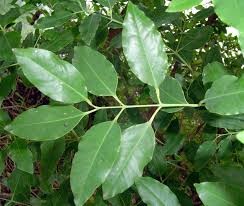Description
We are providing Red Sander Sapling, for more details call: +91-9651263333, 9453278562 or mail us on: info@indiaplantation.com
Introduction:
Pterocarpus santalinus, with the common names red sanders, red sandalwood, and Saunders wood, is a species of Pterocarpusendemic to the southern Eastern Ghats mountain range of India. This tree is valued for the rich red colour of its wood. The wood is not aromatic. The tree is not to be confused with the aromatic Santalum sandalwood trees that grow natively in South India.
Production:
Producing commercially valuable sandalwood with high levels of fragrance oils requires Santalum trees to be a minimum of 15 years old (S. album) the age at which they will be harvested in Western Australia – the yield, quality and volume are still to be clearly understood. Australia likely will be the largest producer of S. album by 2018, the majority grown around Kununurra, Western Australia. Western Australian sandalwood is also grown in plantations in its traditional growing area in the wheat belt east of Perth, where more than 15,000 ha (37,000 acres) are in plantations.
Sandalwood is expensive compared to other types of woods therefore to maximize profit sandalwood is harvested by removing the entire tree instead of sawing it down at the trunk close to ground level. This way wood from the stump and root, which possess high levels of sandalwood oil, can also be processed and sold
Month of Red sander wood Plant:
The killing of 20 people in the forests of Seshachalam, Andhra Pradesh, for allegedly cutting endangered plant species – the Red Sandalwood (Red Sanders), is a story which is filled with greed for money, struggle for survival and apathy from the rulers, all linked with the business of smuggling the red wood.
A report on April 7, the day 20 people hailed from Tamil Nadu were shot dead by Andhra Pradesh inside Seshachalam forest, stated that an auction of nearly half of the red sanders stocked, which were seized from smugglers in the recent years, by the Andhra Pradesh government fetched around Rs 1,000 crore in December.
Maintenance:
Planting strategies have used tree spacing from 2.0 x 2.0 meters to 4.0 x 4.0 meters. The species requires an intensive pruning plan in timber plantations as there has been excessive branching observed. It’s kind of slow growth and experience in plantations to date is very limited as its difficult to grow. Typically this specie has been extracted from prime forests or agroforestry systems so accuracy is not known to crop turns. Pests are not known to affect this tropical tree, however, it is subject to attacks of the shotborer.4 is estimated that Rosewood trees have growth potential of 10 m in height in 15 years, with a diameter (dab) of up to 20 cm4. But harvest cycles to date are not yet fully explored scientifically so final harvest can be up to 30 to 35 years as Rosewood is known for being a very slow growing tropical tree species. Some timber used for wood crafts can be harvested in earlier years. The establishment of tree plantations should not be undertaken in altitudes above 300 m or very humid climates
Usage and Benefits of Red Sandalwood on Skin:
The powder should be mixed with tomato juice and used as a face pack to remove tan and lighten skin naturally. This also removes acne and dark spots effectively with regular use.
Month of Red Sandel wood Plants:
The sandalwood is a root parasite so you have to provide other plants for it to grow along with, especially by the time it is 8″ high, and alternatively, when you plant the sandalwood seed, also throw in some took dal or butterfly seeds.
Sandal trees grow mainly on red ferruginous loam, overlying metamorphic rocks, chiefly gneiss. They can tolerate shallow, rocky ground and stony or gravelly soils, voiding saline or calcareous soils, and are not exacting about the depth of the soil.
Rich and moist soils such as well-drained alluvial soils, do not support sandalwood well; the heartwood in such trees will be deficient in oil. Trees grown on poor soils yield better oil, though they cannot withstand water-logging.
Climate:
The tree flourishes best between altitudes of 600 and 1050 m, though it may go up to 1350 m and descend as low as 360m. The important sandal tracts lie in places where rainfall varies from 60-160cm.
In general, the sandal tree flourishes in regions where the climate is cool with moderate rainfall, plentiful sunshine and long periods of dry weather. The ideal temperature for its growth is between 12° and 30°C.
The major reasons and scope for cultivation:
- Exhausting population of sandal plant in our forests due to indiscriminate destruction of forests.
- Depending completely on forests from ancient times.
- Growing demand nationally and internationally.
- There was no permission for growing this plant in fields and at home.
- Sandal wood is now highly endangered species in India.
- Sandal wood is a perennial plant takes at least 15 years for harvest.
Area of Red Sandal wood plants: Red Sandal in Commonly Known as china, Srigandha, Naturally grown Sandal wood can find in Karnataka, tamilnadu, Andre, Kerala, Gujarat, Madhya Pradesh & U.P. Mainpuri and in some other
States. Chand an is known all over the World as East Indian sandal wood and is prized for its quality of Oil and heart wood.
Among the many hi-tech Hyderabadis who have signed up with his firm is Sheik Rasheed Baha, an IT professional, working with the railways at present. “I was looking at an investment option and this sounded interesting. The real estate market is anyway down so I thought of putting my money here,” Baha said. Only two months ago, he bought 1,200 sq. yards (approx.) in Vikarabad. “I have invested about Rs 3.5 lakh, which I am sure, will grow by at least three times soon,” he added.
Uses:
- What kind of land is required for red sandal plantation?
2) one acre land total how many plants can be farming.
3) What is the distance required from plant to plant.
Please provide dimensions from plant to plant.
4) How frequent and what quantity of water is required for each plant.
5)What is the best process for providing water
On the business side, it is a good raw material for music instruments and luxury furniture, according to Indian Journal of Applied Research. It also yields Santa line dye, which finds use in colouring foodstuff and pharmaceutical preparations and additionally, the extracts obtained from the tree bark and wood are known to have several medicinal properties.





